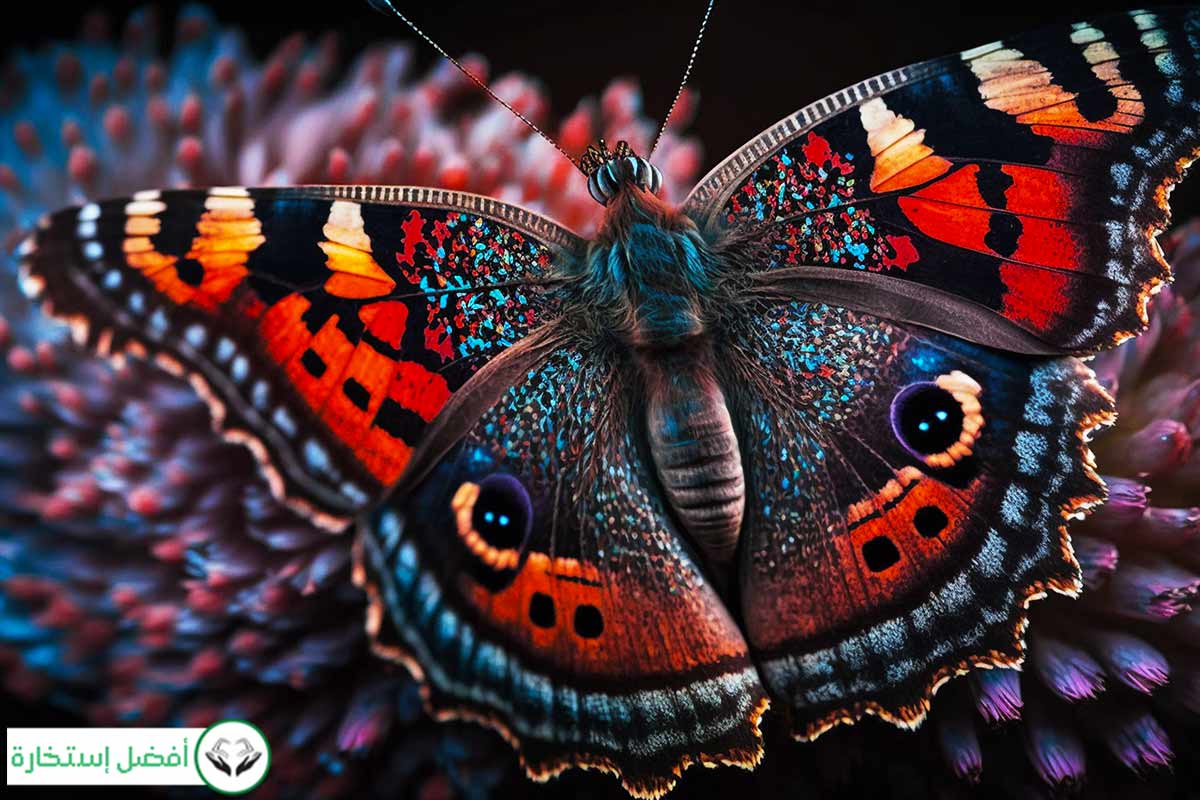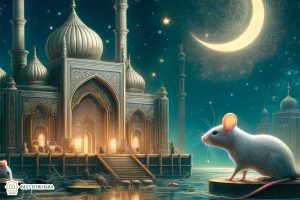Dreams have long been a subject of fascination and interpretation in various cultures and religions worldwide. Islam, one of the world’s major religions, places great importance on dreams and considers them a means of divine communication. Muslims believe that dreams can provide valuable insights into their lives and offer guidance from Allah.
The butterfly is one of the most commonly interpreted symbols in Islamic dream interpretation. The butterfly symbolizes transformation, beauty, and spirituality, and its presence in a dream can often hold significant meaning. This article will explore the various interpretations of a butterfly dream in Islam and what it may signify for the dreamer. We will delve into the butterfly’s symbolism and how it relates to Islamic beliefs and teachings. Whether you are a Muslim or simply curious about Islamic dream interpretation, this article will provide you with a deeper understanding of the spiritual significance of the butterfly in Islamic dream interpretation. If you want to read more about this topic, follow the dream interpretation in Islam.
What Does it Mean to Dream About a Butterfly in Islam?
In Islamic dream interpretation, a butterfly is often regarded as a symbol of transformation, beauty, and spiritual growth. Dreams about butterflies can carry different meanings depending on the context of the dream and the individual’s experiences and feelings.
If you dream about a butterfly in Islam, it may signify a change or transformation that will take place in your life. This could be a positive transformation, such as a new beginning or a spiritual awakening, or a negative one, such as a loss or a difficult challenge. The butterfly may be a sign from Allah that you must embrace this change and trust in His plan for your life.
Another interpretation of a butterfly dream in Islam is that it may represent the soul or the spirit. In this context, seeing a butterfly in a dream could mean that your soul is undergoing a transformation or that you are spiritually evolving. It may also be a reminder from Allah to focus on your spiritual growth and to seek His guidance in your journey.
If the butterfly in your dream is colorful, it may indicate that you are about to experience joy and happiness. Conversely, if the butterfly is dead or dying, it may suggest that you are facing a difficult situation that requires you to let go of something or someone in your life.
Overall, a butterfly dream in Islam is a positive sign that suggests growth and transformation. It is essential to reflect on the context of the dream and your personal experiences to understand its specific meaning accurately. As always, seeking guidance from Allah and praying for clarity and understanding in all matters, including dreams, is recommended.
Butterfly Symbolism in Islamic Dream Interpretation
In Islamic dream interpretation, the butterfly symbolizes transformation, beauty, and spiritual growth. The butterfly’s symbolism is rooted in transforming from a caterpillar to a beautiful winged creature, representing the soul’s spiritual journey.
The butterfly’s symbolism in Islamic dream interpretation also represents the human desire for spiritual elevation and growth. It is believed that seeing a butterfly in a dream represents the need to develop one’s spirituality and seek a deeper connection with Allah.
The butterfly’s symbolism is also associated with the concept of resurrection in Islam. The transformation from a caterpillar to a butterfly is a metaphor for the soul’s journey from this world to the hereafter. The butterfly’s emergence from the cocoon is believed to represent the soul’s resurrection on the Day of Judgment.
Moreover, the butterfly’s symbolism in Islamic dream interpretation can also represent the soul’s journey toward purity and enlightenment. In this context, the butterfly’s beauty is seen as a reflection of the soul’s true nature, which is pure and radiant.
Overall, the butterfly’s symbolism in Islamic dream interpretation is a positive sign that suggests spiritual growth and transformation. It is important to reflect on the dream’s context and seek guidance from Allah to understand its meaning accurately.
Butterfly Dream Interpretation in Quran And Hadith
Several references to butterflies and their symbolism in the Quran and Hadith provide insight into Islamic dream interpretation. Here are some examples:
- Quran 101:4-5: “And [by] the horses that gallop with panting breath, and [by] the ones that strike sparks [with their hooves] on the dawn raid.”
This verse is believed to reference butterflies, as the Arabic word for “horses” (al-ʿadiyāt) can also mean “butterflies.” The fluttering wings of butterflies are likened to the galloping of horses in this verse. - Hadith of Jibril: In this hadith, the archangel Jibril (Gabriel) is said to have appeared to the Prophet Muhammad (peace be upon him) in the form of a man with “white clothing and black hair.” Jibril’s appearance is described as “like a traveler,” but some interpretations suggest that his similarity to a butterfly’s metamorphosis is significant.
- Hadith of Abu Huraira: The Prophet Muhammad (peace be upon him) is said to have taught that “a dream is one of the forty-six parts of prophecy.” This hadith highlights the importance of dreams in Islam and suggests they can be a means of divine communication.
Overall, while there are few direct references to the butterfly dream interpretation in the Quran and Hadith, these references provide insight into the butterfly’s symbolism and connection to spiritual transformation. The Quranic verse referencing the fluttering of butterflies highlights their movement and energy. At the same time, the Hadith of Jibril suggests that the butterfly’s metamorphosis can be a symbol of spiritual growth and change. Additionally, the Hadith of Abu Huraira emphasizes the importance of paying attention to one’s dreams and seeking guidance from Allah in their interpretation. In Islamic dream interpretation, the butterfly’s symbolism is often associated with transformation, beauty, and spiritual growth, and its presence in a dream can be a positive sign of spiritual development and connection with Allah.
Conclusion
In conclusion, dreams play a significant role in Islamic culture, and the interpretation of dreams is important for Muslims. Dreams about butterflies are common and hold a special significance in Islamic dream interpretation. The butterfly is a symbol of transformation, beauty, and spiritual growth, and its presence in a dream can carry different meanings depending on the context of the dream and the individual’s personal experiences and feelings.
Islamic dream interpretation emphasizes the importance of seeking guidance from Allah in understanding the meaning of one’s dreams. Reflecting on the dream’s context and seeking clarity and understanding through prayer and supplication is essential. The butterfly’s symbolism in Islamic dream interpretation can provide valuable insights into one’s spiritual journey and offer guidance toward a deeper connection with Allah.
By understanding the butterfly’s symbolism in Islamic dream interpretation, Muslims can better understand their dreams and use them for spiritual growth and guidance. While dreams may seem mysterious and elusive, they offer a unique and valuable way to connect with Allah and gain insights into our lives and spiritual journeys. As Muslims, we should view our dreams as a gift from Allah and seek to understand their meaning, including the butterfly’s symbolism, to navigate our spiritual path better. If you want to read more about the dream interpretation of animals in Islam, click here.








1 thought on “Dream Interpretation of Butterfly In Islam”
Dreaming about a butterfly in Islam represents transformation, renewal, and the spiritual journey towards personal growth.